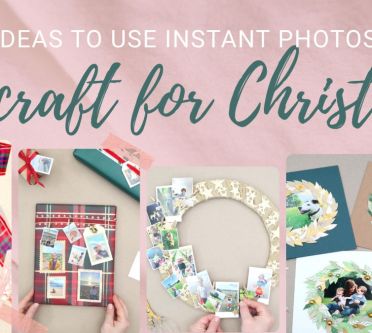Blog
Blog
It’s always a good idea to ask questions. Sometimes the answer can lead your crafting in a whole new direction, or it can simply give you a confidence boost. We’ve put together some of our best Q&A’s to bring you some expert knowledge from the crafty world. Read on and pick up some handy tips and tricks!

Q “My craft room looks a mess! Can you share any space saving tips?”
A: CORINNE BRADD SAYS… I know how you feel, our little house is bursting at the seems with craft materials that I bring home to work on, and it’s not helped by my obsession for collecting wooden cotton reels! I’d recommend utilising any wall space that you may have available with a simple pegboard that can be re-arranged to accommodate a selection of tools and materials. All you need is a medium to large picture frame, piece of pegboard cut to size and some hardware hooks and fittings.
Q “How easy is it to set up an online shop, what are the pros and cons?”
A: CAMILLA WESTERGAARD SAYS… Setting up a Folksy shop is really easy and it’s free! You just pay 15p when you list an item (plus VAT), so it’s a great way to get started without lots of risk or expense. There are only two things you’ll need before you set up: a business Paypal account and your shop name. Then you’re good to go! Marketplaces can be really supportive places to start selling – Folksy has a friendly forum where you can talk to other sellers and get advice, plus you also have the chance of being featured in newsletters, gift guides and on social media channels to a ready-made audience, so you’re not totally on your own. To do well though, you’ll also need to promote your shop, and good product photographs are a must!

Q “Are there any edible inks I can use for cake decorating?”
A: CORINNE BRADD SAYS… Recently I discovered these edible pens in a range of six colours from Lakeland and tested them out on some iced biscuits with my nieces. We found that pens are much easier to use than piping intricate details and my nieces really had fun practising their artistic skills, with the added bonus that they could eat the end results! Six decorating pens are £9.98, order at lakeland.co.uk
Q “What is the easiest way to create
multiple die shapes?”
A: PETE HUGHES SAYS… One way to make batches of the same design is to buy eight identical dies and run them through the machine at once! This method is neither practical or cost effective, so the best solution is to use a Sizzix Bigz die. These dies have a deep steel blade which cuts through a wide variety of materials from tissue paper to thick mount board, as well as creating multiple shapes in one pass through the Big Shot Plus machine.
Q “My cling stamps won’t stick to the acrylic block - what am I doing wrong?”
A: JOANNA SHEEN SAYS… I suggest washing both the stamp and the block in mild soapy water, drying them carefully, then try again. There are some brands of cheaper acrylic stamps that do lose their ability to cling after a while, but wash them first before you give up. My cling stamps won’t stick to the acrylic block - what am I doing wrong?

Q “What weight of card should I use for making blanks?”
A: JOANNA SHEEN SAYS… When I’m making a greeting card, I like to use a base that is either 250gsm in weight or more. If you use cheap flimsy card, then it may not stand up nicely when it is displayed. However, when it comes to matting and layering which is purely decorative, you can afford to use a lighter weight or even good quality card. My ideal weights are 250/300gsm to make a blank and 160gsm for the layers.
Q “Is there a simple project the kids can craft without making a mess?”
A: ROSIE SAVAGE SAYS… Well, why not make a fun alternative calendar that the kids will love? Simply hang small handmade jute gift bags on the wall above your mantelpiece, filling each one with toys and sweets for the ultimate way to count down the months. And if you’re worried about marking the paint work, there’s a sticking product called Command Clear Mini Hooks that will safely secure the bags, leaving your walls damage-free when the time comes to take them down. Find Command products at all good DIY outlets and branches of Tesco.
Q “What’s the best way to break up old
china to use in a mosaic project?”
A: JILL ALBAS SAYS… First pop your china inside a strong plastic bag. Place on a hard surface and tap gently with a hammer (I prefer to do this part on the patio). Tip the broken china onto an old tray. Discard any fragments that aren’t suitable and put overly large pieces back in the bag and tap again: cutters are handy for shaping smaller pieces. The plate rims tend to be thinner than the bases, so bear this in mind if you want an even surface. Use a strong PVA glue and ordinary tile grout for home décor projects, but for outdoors a weatherproof adhesive is essential.

Q “I struggle to find ways to store my large collection of dies. Are there any cheap storage solutions?”
A: JOANNA SAYS… I think separating the collections into sections is important. How about using box files from a stationery store and grouping the dies into categories: words/ frames/apertures/men/children, whichever suits your die collection the best. I also have a file with ‘favourites’ written on it as I often choose the same die over and over again. It’s also a great way of using bog standard stationery storage which you can often pick up as bargain buys and two-for-one offers.
Q “Do I need insurance if I am exhibiting at craft fairs?”
A: CAMILLA SAYS… If you’re going to sell at a craft fair or any other event you need to have Public Liability Insurance. Most craft fair organisers will make this a condition of the booking and some will even ask you to send the insurance certificate with your application or show it on the day of the event. Public Liability Insurance covers you if someone is injured because of your business – they can trip over a product for example, or if your display falls on them. You can expect to pay around £100 a year for Public Liability Insurance, and there are many specialist companies that offer insurance for small craft businesses, such as craftcover.com and craftinsurance.co.uk. You should also consider product liability insurance, which covers you if anyone sustains an injury as a result of using your product. Many insurers offer combined Product / Public Liability Insurance, policies but check the details of your cover, as well as the excess, so you know exactly what you are covered for.
Thirsty for more knowledge? Be sure to check out our Ask The Experts page, in every issue of Crafts Beautiful!










_151_86_int_c1.png)














